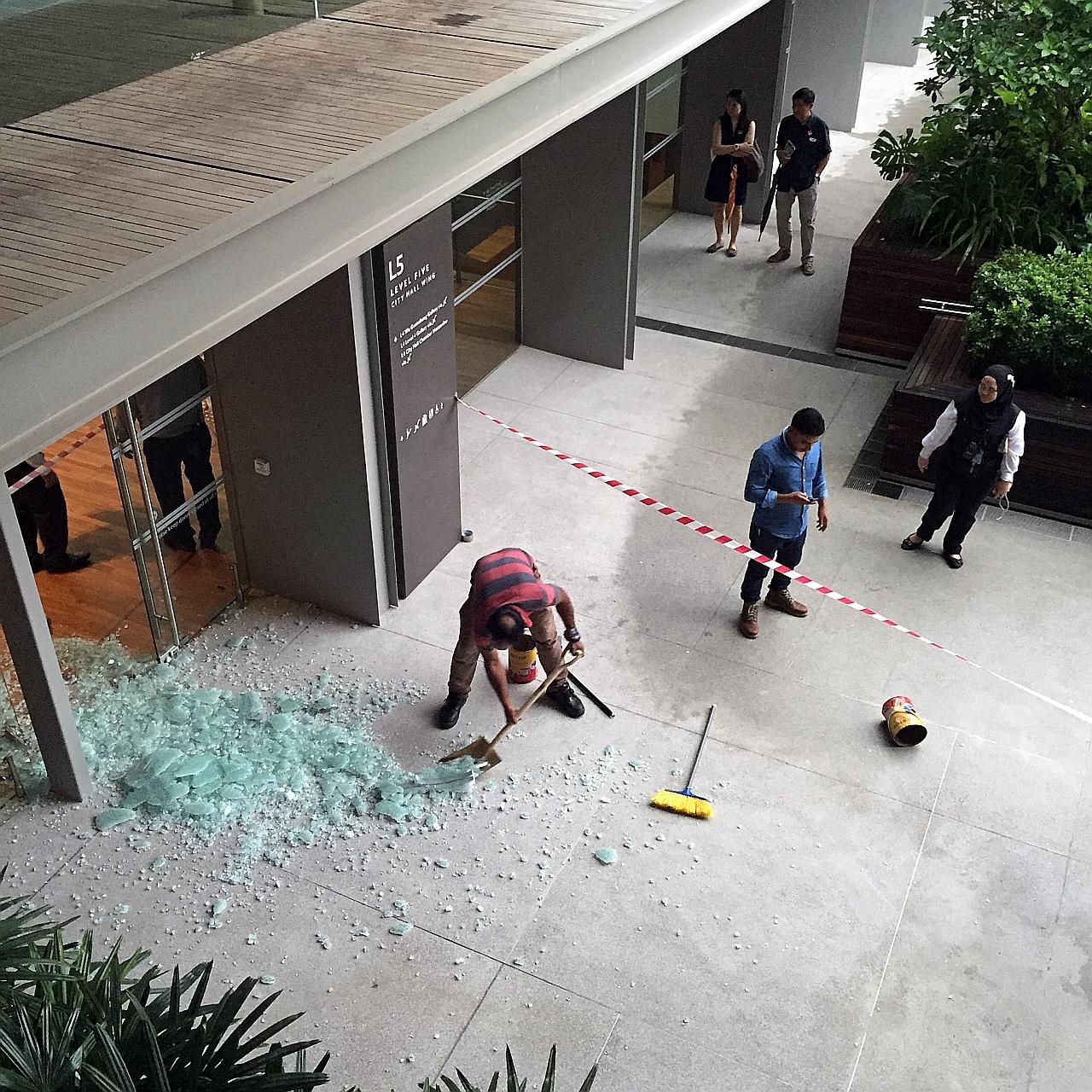Glass-shattering issues aired at industry conference
Sign up now: Get ST's newsletters delivered to your inbox

In December last year, a glass door at the National Gallery Singapore shattered just a week after the museum's opening. Spontaneous glass shattering was discussed at the Asia Facade and Glass Conference yesterday.
ST FILE PHOTO
Yeo Sam Jo
Follow topic:
The issue of glass shattering spontaneously took centre stage at the Asia Facade and Glass Conference yesterday, as architects and other industry players discussed current safety regulations.
It followed a number of incidents that have occurred in which glass structures such as windows, doors and pool barriers shattered, injuring people in some cases.
A conference participant asked if there were any rules specifying the type of glass to be used for shower screens and sliding doors.
He was referring to the Building and Construction Authority's (BCA) regulation from July 2011, which specifies that glass used as a safety barrier must be laminated glass, which holds together when broken. It must also be designed to withstand a horizontal force, such as pushing, leaning and impact, in accordance with prescribed standards.
Mr Teo Orh Hai, group director of the BCA building plan and management group, said that there are no such requirements as installations such as shower screens, unlike parapet walls, are not safety barriers designed to take loads.
Elaborating after the conference, which was part of the Architecture and Building Services 2016 event at Marina Bay Sands, Mr Teo said: "For example, your window doesn't need to take any kind of horizontal impact, so it can use any kind of glass, other than tempered glass."
Tempered glass is not allowed for windows because it can spontaneously shatter and the fragments would fall from height.
Mr Teo noted that tempered glass is about four times stronger than normal glass, but has that risk of shattering spontaneously, though rarely. Laminated glass, which is typically two layers of glass joined by an adhesive, is considered safer as it holds together when broken.
But the higher cost of laminated glass makes it less popular, said experts. Mr Gary Lee, business development manager of Singapore Safety Glass, said clear laminated glass costs about $150 per sq m, compared to non-laminated glass, which goes for about $60 per sq m.
In December last year, a glass door at the National Gallery Singapore shattered just a week after the museum's opening.
In June this year, a resident's bedroom window at The Trizon condominium shattered without apparent reason.
The BCA said in the past four years, it has received an average of 15 reports on glass shattering each year, from 25 condos.
President of the Association of Strata Managers, Mr Chan Kok Hong, said some estates have taken precautions such as installing a safety film on the surface of the glass.
Said Mr Chan: "This safety film will hold the glass together for up to four hours so that the broken glass will not come raining down when the spontaneous breakage occurs."

